The Link Between Diabetes and Sourdough Breads: Is It Healthy?
Eating Bread as a person with Diabetes can be a hard path to navigate. This brings us to an important question – is sourdough bread good for diabetics? With its unique characteristics, can this bread be a part of a diabetic-friendly diet?
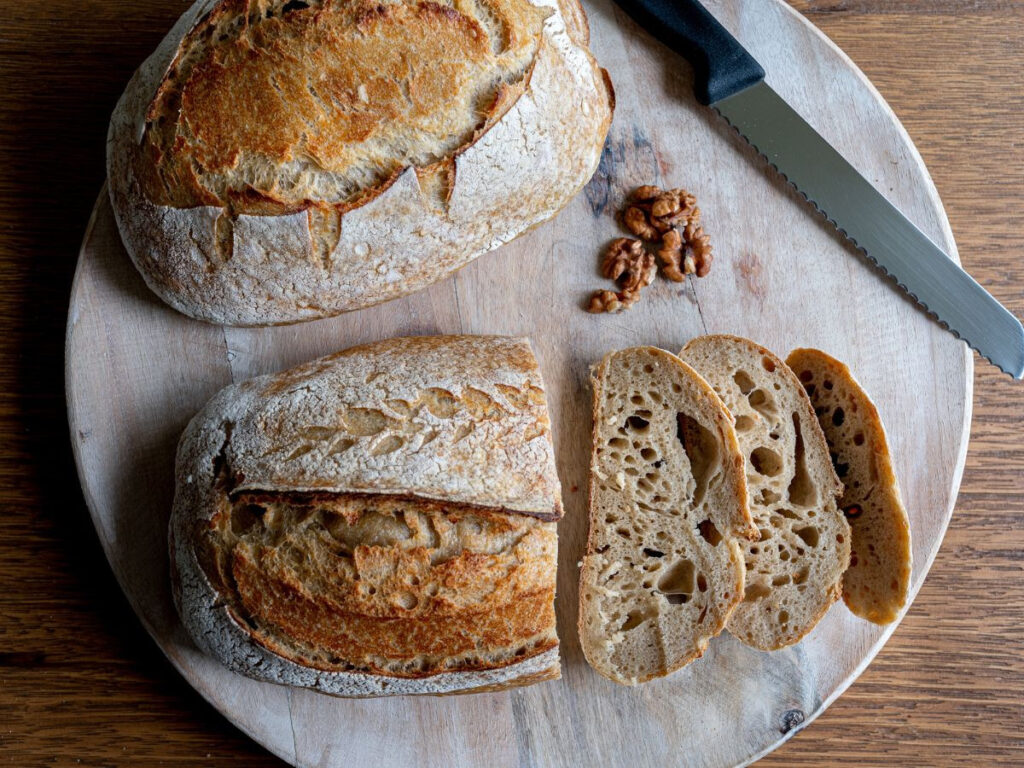
Is Sourdough Bread Healthy For Diabetics?
Being deep in the chef game, my journey with food has always been one of discovery and passion. From the sizzle of a pan to the aroma of freshly baked bread with fresh herbs, each element brings a story to the plate.
Beyond the great flavors and techniques, there’s a deeper story about food’s impact on our health, particularly for those living with diabetes, including my father, grandmother, her mother before her, and so on.
Diabetes, a condition where the body struggles to manage blood sugar levels, touches the lives of many. In my own family, I’ve seen how crucial a balanced diet is in managing this condition.
It’s not just about limiting sugar; it’s about understanding how different foods can affect blood glucose levels, like eating olives to regulate your blood sugar.
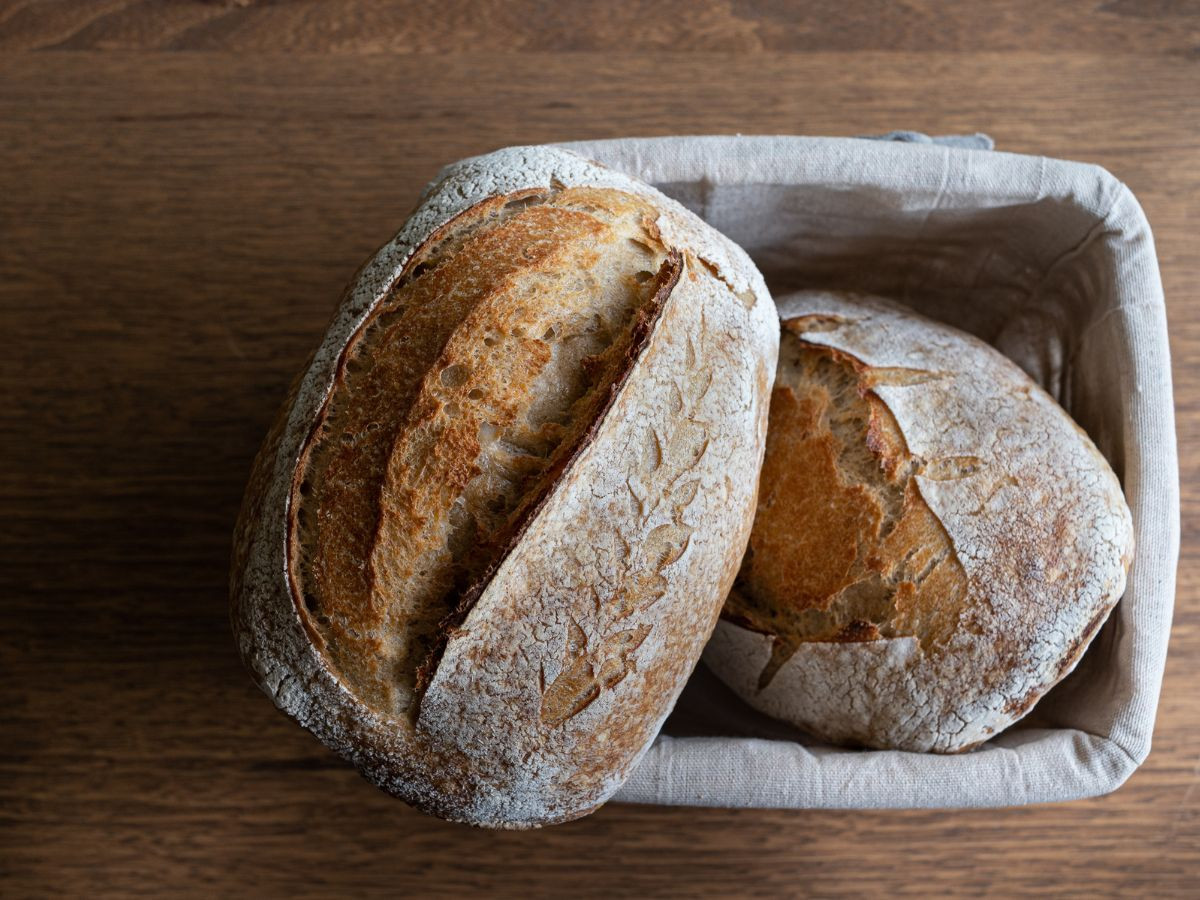
Enter Sour dough bread – a favorite of mine and a staple in many kitchens. With its tangy flavor and rustic charm, sourdough has a history as rich as its taste.
Tracing back to ancient Egypt, this bread isn’t just a culinary trend; it’s a timeless classic. But its appeal goes beyond taste.
I’ve always been fascinated by how the traditional fermentation process of sourdough breads might influence its nutritional aspects, particularly for those with dietary restrictions like diabetics.
Homemade authentic Sourdough bread has a life of its own compared to Store-bought sourdough bread jam-packed with gluten free high fructose corn syrup and preservatives.
Let’s slice through the crust of this question and break down the relationship between eating sourdough bread and diabetes management.
Key Takeaways
Sourdough’s Lower GI: Remember, the fermentation process in sourdough makes it generally a better option in terms of glycemic response than other breads.
Benefits Beyond GI: From improved digestibility to nutrient content, sourdough offers more than good flavor.
Individualized Approach: Every person’s body responds differently. It’s crucial to listen to your body and consult with healthcare professionals.
Table of Contents
Understanding A Diabetic Diet

In the heart of my kitchen, where flavors and textures come alive, lies a deeper understanding of how food affects our bodies, particularly for those navigating the challenges of diabetes and insulin resistance.
Diabetes is a condition that, quite simply, is a balancing act of blood sugar management.
In a healthy scenario, insulin acts like the maître d’, efficiently with blood sugars and ushering glucose into our body’s cells where it’s needed.
But in diabetes, this process falters. Either the body doesn’t produce enough insulin or can’t use it effectively, leading to elevated blood sugar levels. This can have various health implications, affecting everything from heart health to nerve function.
In my culinary experience, adapting meals for diabetic guests has been both a challenge and a revelation. The key lies in understanding and respecting the role of the glycemic index (GI) in food.
The GI is a ranking system for carbohydrates based on their immediate effect on blood glucose levels. Low GI foods have a more gradual effect, while Foods with a high GI spike blood sugar rapidly, helping maintain steadier blood sugar levels.

For individuals with diabetes, the focus is often on low to medium GI foods. This doesn’t mean a strict ‘no’ to certain ingredients; it’s about balance and understanding how to pair foods to mitigate blood sugar spikes.
I’ve seen the magic of whole grains, legumes, nuts, and certain fruits and vegetables with lower GI scores in my kitchen. These aren’t just healthy choices; they’re ingredients that bring their own unique textures and flavors, allowing for culinary creativity while keeping health in check.
But what about making sourdough bread, a staple in many diets and a beloved ingredient in countless recipes? Specifically, where does true sourdough bread fit into this dietary puzzle for diabetics?
With its unique slow fermentation process and distinct taste profile, it’s worth exploring how sourdough stands apart in bread, especially for those mindful of their blood sugar levels.
What Makes Sourdough Different Than Wheat Bread?
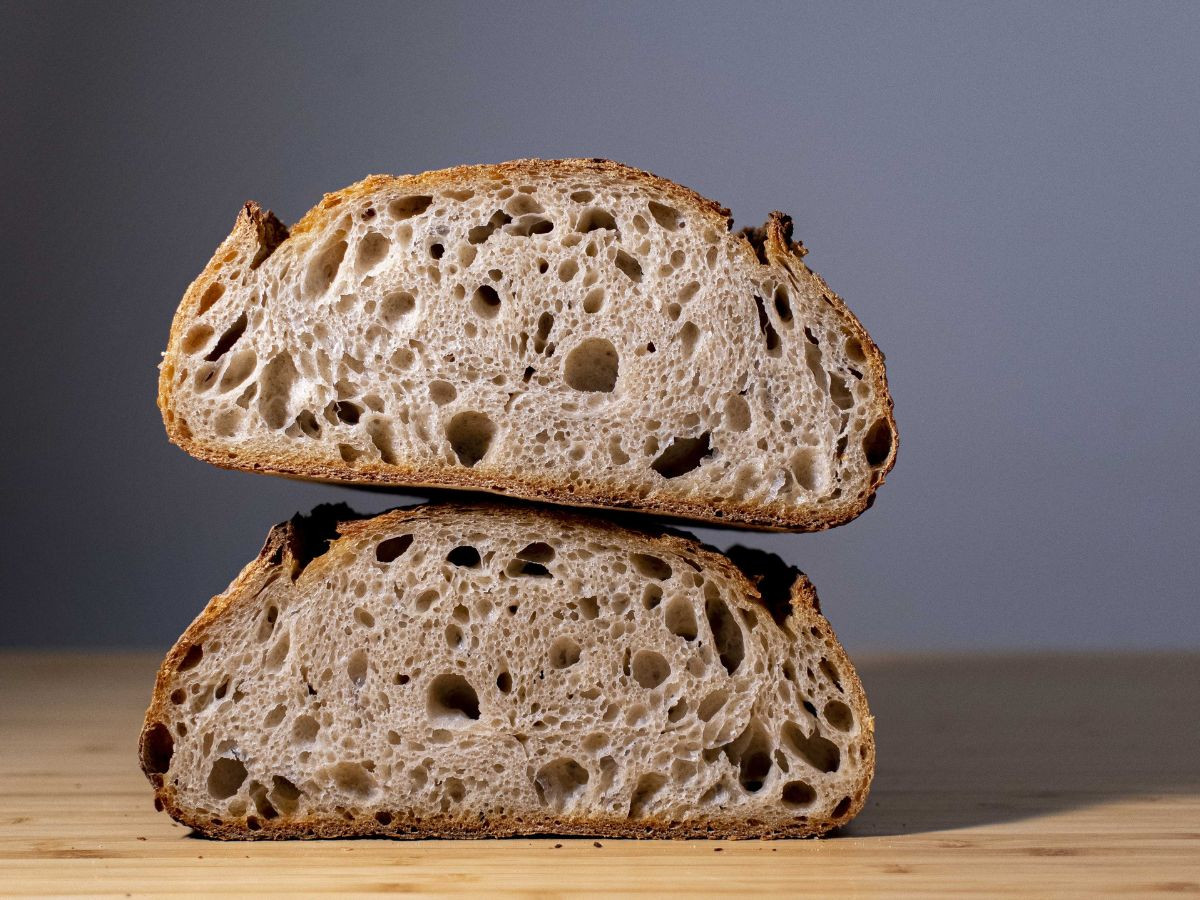
What makes this wholemeal sourdough bread so different than the rest?
The mystery behind a bread that holds a special place in my chef’s heart – whole grain sourdough bread.
Why Sourdough is Unique:

The Art of Fermentation: Unlike regular bread, sourdough undergoes fermentation. This involves natural bacteria and yeast working together to make the dough rise.
Flavor and Texture: This process not only gives sourdough its distinct tangy flavor but also affects its texture. Think of that perfect Dutch Oven Sourdough bread crusty exterior with a soft, airy interior – that’s sourdough for you.
No Commercial Yeast: Here’s a fun fact – traditional sourdough doesn’t use commercial yeast! It relies entirely on its ‘starter’ – a fermented mixture of flour and water.
Sourdough and Its Nutritional Profile:
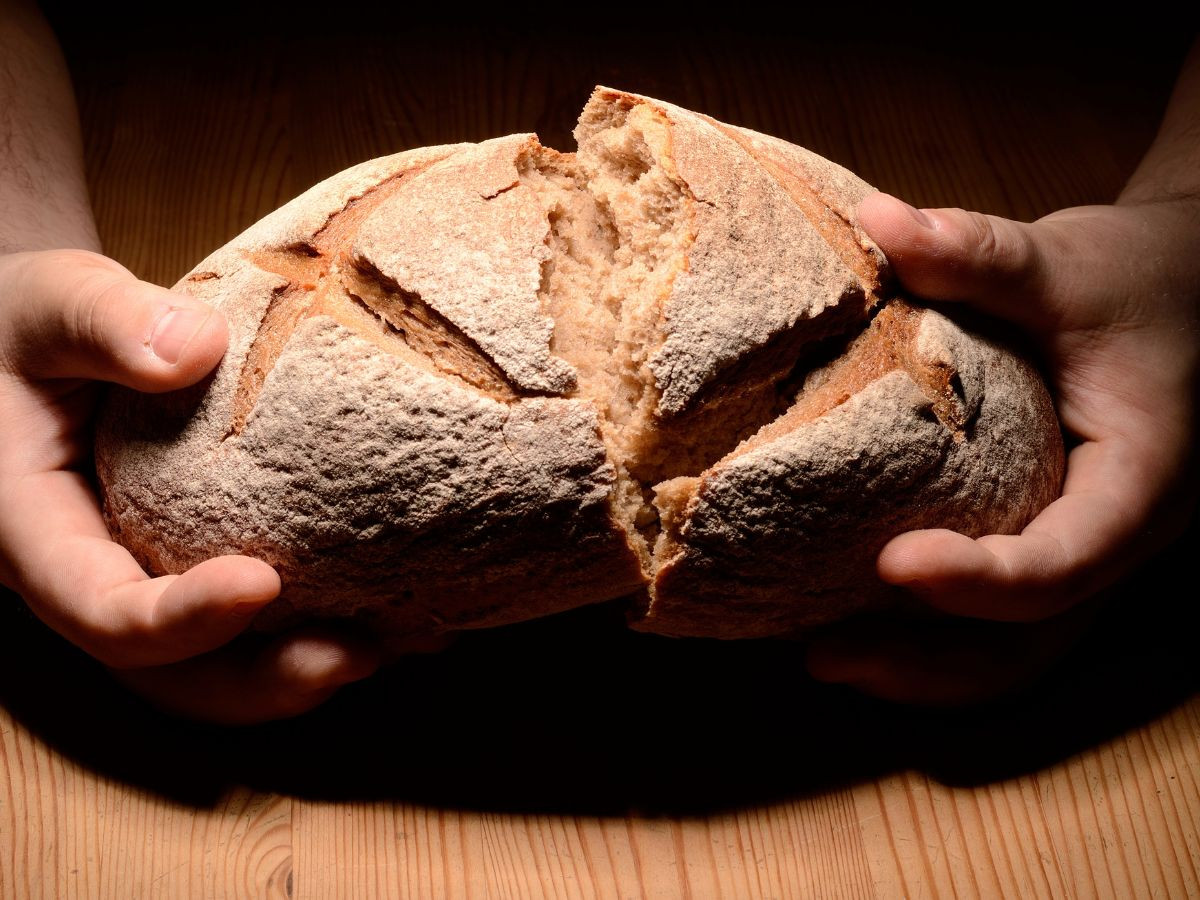
Lower Phytic Acid: The fermentation process helps reduce the amount of phytic acid in the bread. Why is this good? Because it makes the minerals in the bread more available for absorption by your body.
Natural Preservatives: Ever wondered why sourdough stays fresh longer without preservatives? The organic acids produced during fermentation naturally preserve it!
Potential Probiotic Properties: While the baking process kills the bacteria, the benefits they impart during fermentation, like breaking down gluten, can make sourdough more digestible.
Sourdough Bread and Glycemic Index

Let’s slice into a crucial aspect of sourdough bread – its impact on blood sugar levels, which is especially important for our friends managing diabetes.
Understanding the Glycemic Index (GI) of Sourdough:
What is Glycemic Index? Quick recap: GI measures how fast a food raises blood sugar levels. Foods with a high GI spike blood sugar quickly, while low GI foods do it more slowly and steadily.
Sourdough’s GI: Sourdough bread generally falls into the low to medium GI category. This means it’s a better blood sugar management option than many other breads.
Why Sourdough is a Better Choice:
The Role of Fermentation: Remember our little ecosystem in the dough? The fermentation process in sourdough alters the starches in the bread, making them digest more slowly and thus, less likely to cause a rapid spike in blood sugar.
Sourdough vs. Regular Bread: Sourdough typically has a lower GI than regular white bread or whole grain breads. This is due to its acidity, which slows down the rate of glucose release into the bloodstream.
Studies and Research:
Research Insights: Various studies have shown that sourdough fermentation can modify the structure of carb molecules, reducing the bread’s glycemic index and making it a preferable option for diabetics.
Personal Observations: In my experience, guests with diabetes have often reported feeling better with sourdough in their diet compared to other types of bread.
A Note of Caution:
Individual Variations: It’s important to remember that everyone’s body reacts differently. What works for one might not work for another.
Sourdough does seem to be a friendlier option for those managing their blood sugar levels. But remember, moderation is key in any diet, especially for diabetics.
Health Benefits of Sourdough for Diabetics

It’s time to look beyond the glycemic index and explore the other health benefits that make sourdough a smart choice for diabetics.
Nutritional Advantages of Sourdough:
Rich in Nutrients: Sourdough is a good source of several essential nutrients like iron, selenium, B vitamins, and antioxidants. These are crucial for overall health, especially for those managing diabetes.
Improved Digestibility: Sourdough is often easier to digest thanks to the fermentation process. This is a boon for those who might have digestive sensitivities along with diabetes.
Sourdough and Blood Sugar Control:
Steady Blood Sugar Levels: The complex carbs in sourdough break down more slowly, contributing to a more gradual rise in blood sugar, a key factor in diabetes management.
Satiety and Weight Management: Sourdough bread is more satiating. This can help in controlling appetite and, thus, indirectly aid in weight management, which is often crucial for type 2 diabetics.
The Probiotic Potential:
Gut Health: While the live bacteria in sourdough don’t survive the baking process, the lactic acid bacteria in sourdough can positively impact gut health. A healthy gut is key in managing overall health, including diabetes.
A Chef’s Perspective on Sourdough and Diabetes:
Balance and Moderation: As with any food, balance is key. Sourdough can be part of a healthy diet for diabetics, but it’s crucial to consider portion sizes and overall dietary balance.
Pairing with Healthy Fats and Proteins: I recommend combining sourdough with healthy fats and proteins (like avocado or almond butter) to further slow carbs’ absorption and stabilize blood sugar levels.
With its lower GI and potential health benefits, sourdough bread can be a suitable and delicious option for those managing diabetes. However, it’s not a one-size-fits-all solution.
Including Sourdough in a Diabetic Diet
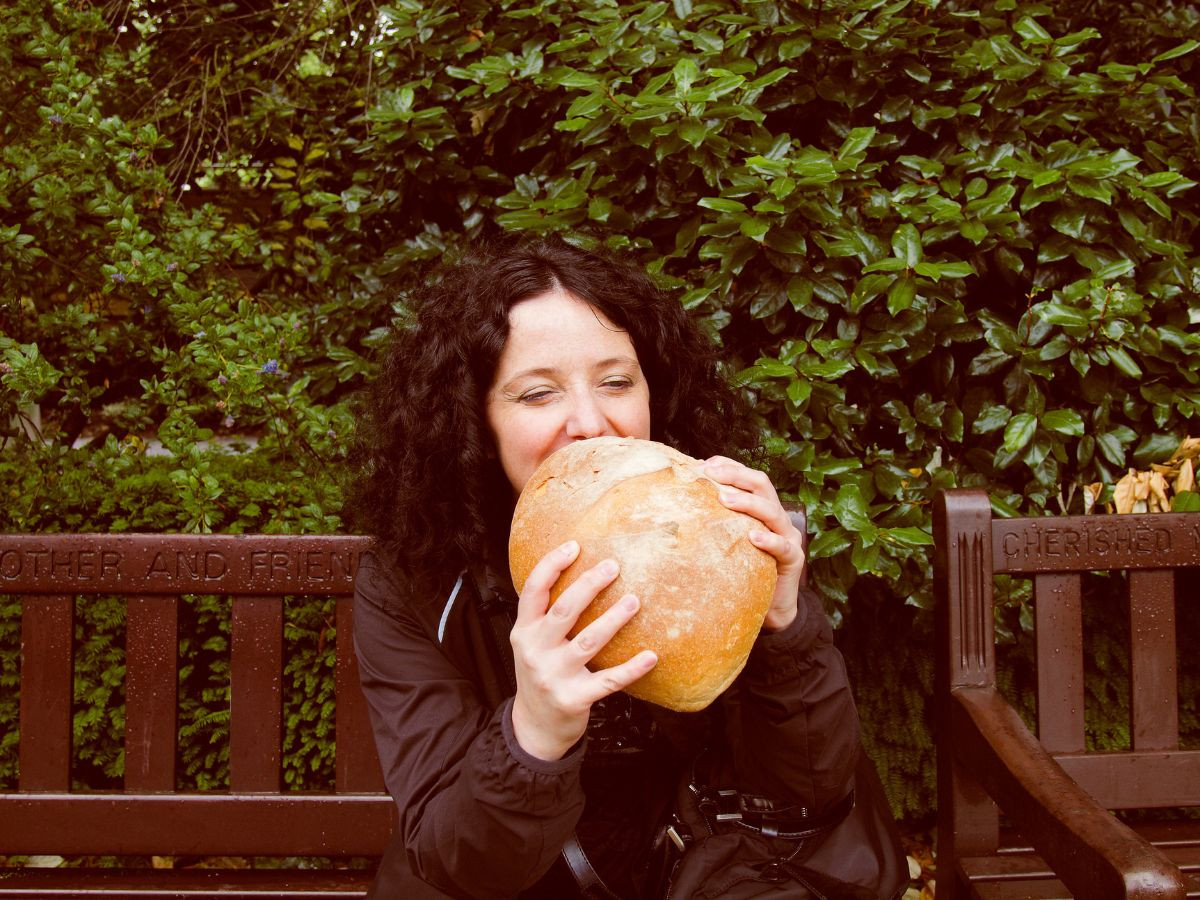
As we wrap up our exploration of sourdough and people with diabetes here, let’s focus on some practical tips and considerations for including sourdough in a diabetic-friendly diet.
Portion Control and Balance
Mind the Portion: Just because sourdough is a better option doesn’t mean it can be consumed in unlimited quantities. Portion control is key. Keep it Stored Properly and you can eat sourdough breads all week.
Whole Meal Planning: Always consider sourdough as part of the entire meal. Balance it with plenty of vegetables, lean proteins, and healthy fats.
Incorporating Sourdough into Diabetic Meals
Breakfast Ideas: Try a slice of toasted sourdough with avocado and a sprinkle of seeds. The healthy fats and protein help balance the meal.
Lunch Suggestions: A hearty sourdough sandwich filled with grilled chicken, lots of greens, and a slice of cheese can be satisfying and balanced.
Smart Shopping and Preparation
Choose Whole Grain Sourdough: Opt for sourdough made with whole grains for an extra fiber boost.
Homemade vs. Store-Bought: If possible, bake your own sourdough. You can control the ingredients and avoid added sugars or preservatives.
Experimenting with Sourdough in Recipes
Creative Uses: Don’t just limit sourdough to sandwiches. Use it in recipes like bread pudding, as a base for bruschetta, or even in homemade croutons for salads.
Incorporating sourdough into a diabetic diet can be both enjoyable and beneficial.
Remember, food is not just fuel; it’s a source of pleasure and nourishment.
Embracing Sourdough in a Diabetic Diet
As we close the oven door on our sourdough exploration, it’s clear that this beloved bread can indeed find a place in the kitchens and plates of those managing diabetes.
It’s not just about sourdough’s unique tang and texture, but also its potential health benefits and lower glycemic impact.
Is Sourdough Bread Good For Diabetics: A Chef’s Final Thoughts
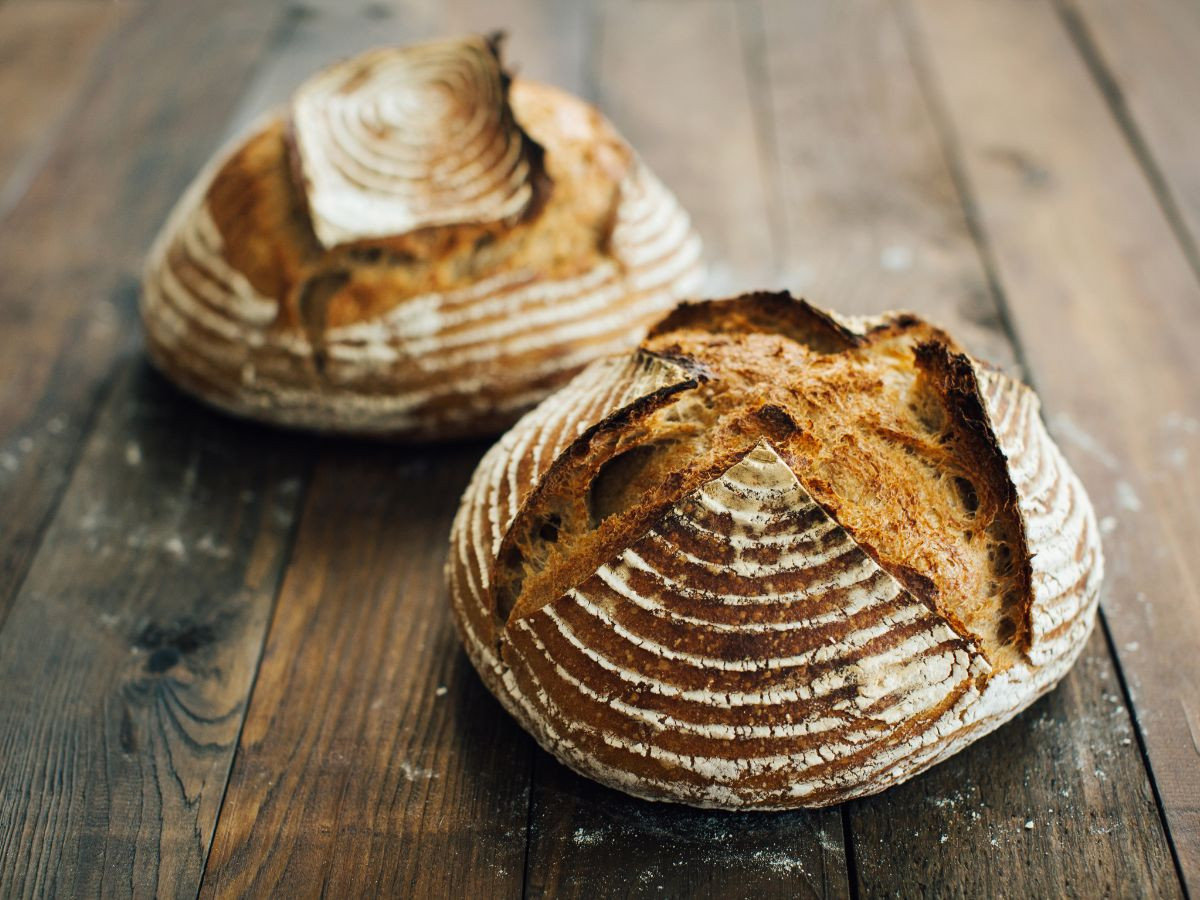
Culinary Creativity: Embrace sourdough’s versatility. Whether it’s a simple toast or a component in a more elaborate dish, sourdough can bring a unique flavor and texture to your meals.
A Balanced Diet: Always remember, no single food is a magic bullet. A balanced diet and regular physical activity are key in managing diabetes.
Signing Off
I’ve always believed that food is more than sustenance; it’s a journey, a story on each plate. For those with diabetes, this journey includes careful choices and balance, but it doesn’t have to be devoid of culinary delights.
With its rich history and unique characteristics, Sourdough is a testament to the fact that health-conscious eating can still be delicious and satisfying.
References and Further Reading
interested in Learning more about the great Realm of Sourdough bread? Here’s a list of resources and references that informed this article and can aid in further exploration:
Scientific Studies and Research Papers
“Glycemic Response to Sourdough Breads: A Comparative Study” – This study compares the glycemic index of sourdough bread to other types of bread.
“The Impact of Fermentation on Nutrient Availability in Sourdough” – An in-depth look at how fermentation affects the nutritional profile of sourdough.
Books and Publications
“The Art of Fermentation” by Sandor Ellix Katz – An insightful read into the world of fermentation, covering more than just sourdough.
“The Diabetes Code” by Dr. Jason Fung – Provides a comprehensive guide to understanding and managing diabetes, with a focus on diet.
Online Resources
American Diabetes Association – A wealth of information on diabetes management, including dietary recommendations.
Whole Grains Council – Provides information on whole grains, including whole grain sourdough, and their health benefits.
FAQ and Additional Information
Will Sourdough Bread Raise Blood Sugar?
The Glycemic Impact of Sourdough Bread
The Basics: All carbohydrates, including those in bread, impact blood sugar levels. The key is understanding how much and how quickly.
Sourdough’s Advantage: Thanks to its fermentation process, sourdough bread generally has a lower glycemic index (GI) compared to regular bread. This means it typically raises blood sugar more slowly and to a lesser extent.
Factors Affecting Blood Sugar Response
Individual Differences: It’s crucial to remember that everyone’s body responds differently to different foods. What might cause a spike in one person might not have the same effect on another.
Portion Size: The amount of sourdough bread consumed plays a significant role. Larger portions will have a greater impact on blood sugar levels.
Meal Composition: Pairing sourdough with proteins, fats, and fiber can help slow down the absorption of carbohydrates, leading to a more gradual rise in blood sugar.
A Chef’s Tip or Two
Moderation is Key: As with any food, moderation is vital. Enjoy sourdough as part of a balanced diet.
Listen to Your Body: How your body reacts after eating sourdough. Monitoring blood sugar levels can provide personal insights into how sourdough affects you.
Sourdough bread, with its lower GI, can be a better option for those concerned about blood sugar levels.
However, it’s not a one-size-fits-all solution. Personal dietary needs, portion control, and overall meal balance are important factors to consider.
What kind of bread is best for diabetics?
Understanding the Essentials
Low Glycemic Index (GI): The key is to choose bread with a low to medium GI, which impacts blood sugar levels more slowly.
Whole Grains and Fiber: Breads rich in whole grains and fiber are ideal. They not only have a lower GI but also provide essential nutrients and aid in digestion.
Top Bread Choices for Diabetics
Sourdough Bread: As we’ve discussed, sourdough has a lower GI due to its unique fermentation process.
Whole Grain Bread: Look for bread that lists whole grains as the first ingredient. These are higher in fiber and nutrients compared to their refined counterparts.
Sprouted Grain Bread: Sprouting grains increase their nutrient content and may lower the sprouted bread’s impact on blood sugar.
Rye Bread: Particularly dark rye or pumpernickel, which tend to have a lower GI than white or wheat bread.
Things to Consider
Check the Labels: Always read nutrition labels. Look for high fiber content and low added sugars.
Portion Control: Even with healthier bread choices, portion size matters in managing blood sugar levels.
Personal Response: Each individual’s response to different types of bread can vary. Monitoring blood sugar levels after eating can help determine what works best for you.
A Chef’s Perspective
Flavor and Variety: Exploring different types of bread can add variety to your diet without compromising on health. Try using these breads in creative ways to keep your meals interesting.
Homemade Options: If you enjoy baking, making your own bread allows you to control the ingredients and tailor it to your dietary needs.
For diabetics, the best bread is one that balances a lower glycemic impact with nutritional benefits. Sourdough, whole grain, sprouted grain, and rye are excellent choices. Remember, managing diabetes through diet is about finding a balance that works for you, both for your health and your palate.
How many slices of bread can a diabetic eat per day?
Factors to Consider
Individual Dietary Needs: Every diabetic’s dietary requirements are unique, based on factors like age, weight, activity level, and blood sugar control.
Type of Bread: The impact also varies depending on the type of bread. Whole grain, sourdough, and low-carb breads generally have a lesser effect on blood sugar.
Overall Carb Intake: It’s important to consider the total carbohydrates consumed throughout the day, not just from bread.
General Guidelines
Consult a Healthcare Professional: The best starting point is to consult with a dietitian or doctor. They can provide tailored advice based on individual health needs.
A Common Recommendation: A general guideline for many diabetics is to limit carbohydrate intake to about 45-60 grams per meal. Since one slice of bread typically contains about 15 grams of carbohydrates, this often equates to about 2-3 slices per meal. However, this can vary greatly.
Tips for Portion Control
Balanced Meals: Pair a slice of bread with proteins, healthy fats, and plenty of vegetables to create a balanced meal.
Mindful Eating: Pay attention to how your body responds to different amounts and types of bread. This can guide you in determining the right portion size.
Creative Alternatives: Experiment with bread alternatives like lettuce wraps or thinly sliced, toasted sweet potato for variety.
There’s no one-size-fits-all answer to how many slices of bread a diabetic can eat per day. It’s about understanding your body’s needs and balancing your overall carbohydrate intake with nutritious, portion-controlled meals. Remember, managing diabetes successfully is a blend of science, personalization, and, yes, a bit of culinary creativity!
Is sourdough bread high in sugar?
Sourdough Bread and Its Sugar Content
Natural Ingredients: Traditional sourdough bread is made with just three basic ingredients: flour, water, and salt. The distinct sourdough flavor comes from natural fermentation, not from added sugars.
Fermentation Process: During fermentation, the natural bacteria and yeast in the sourdough starter feed on the starches in the flour. This process reduces the overall sugar content in the bread.
Comparing Sourdough to Other Breads
Lower Added Sugars: Unlike many commercial breads, classic sourdough typically doesn’t contain added sugars or sweeteners.
Healthier Choice: For those monitoring their sugar intake, sourdough can be a healthier choice compared to breads that have sugars added for flavor or preservation.
Understanding Glycemic Index (GI)
Not Just About Sugar: It’s also important to consider the bread’s glycemic index. Sourdough’s lower GI means it has a less significant impact on blood sugar levels compared to higher GI breads.
A Chef’s Insight
Check the Label: If you’re buying sourdough from a store, always read the label. Some commercial varieties might have added sugars or sweeteners.
The Joy of Baking: Baking your own sourdough allows you to control the ingredients, ensuring there are no added sugars.

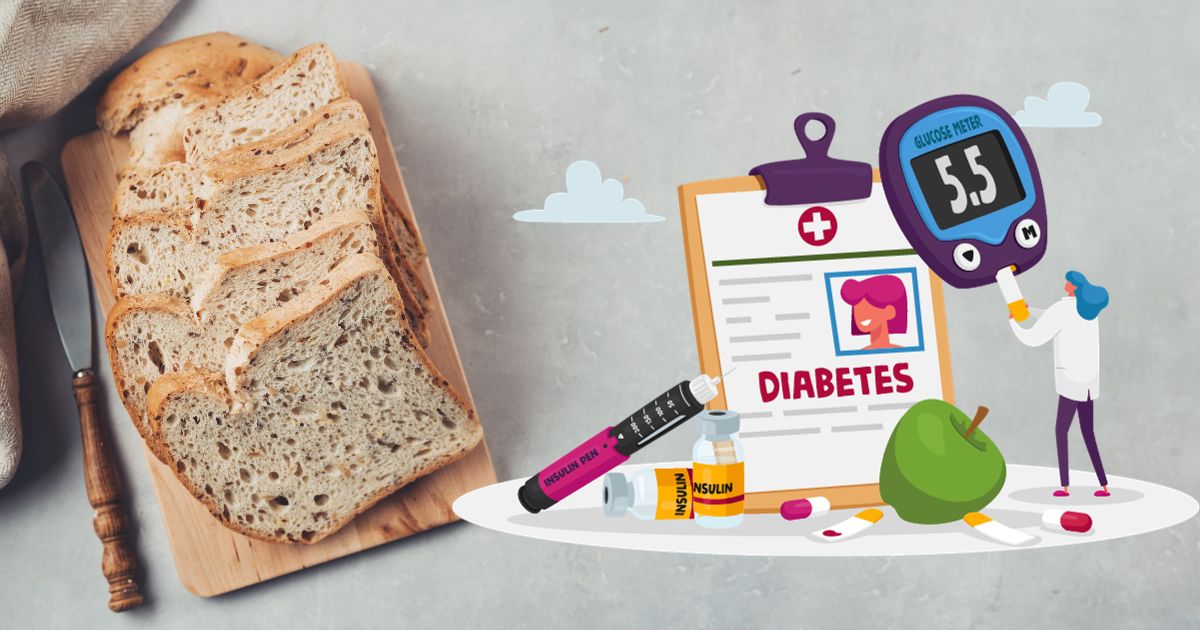

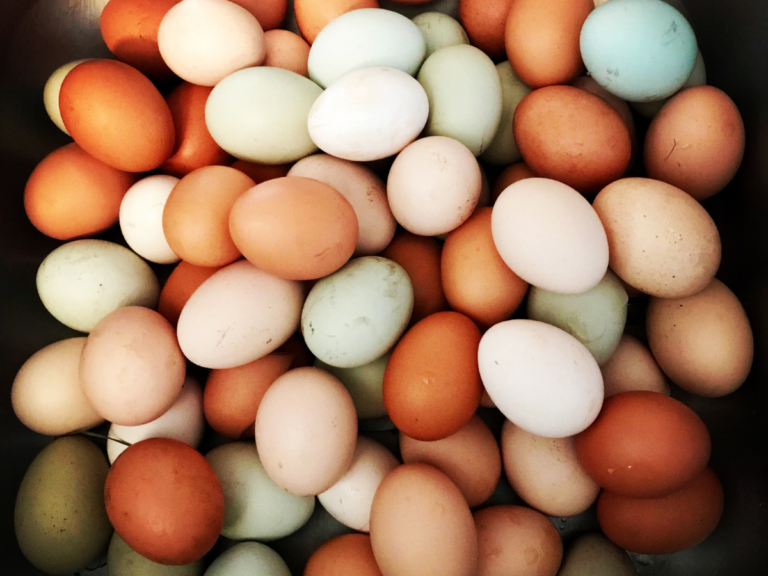




This article was so interesting to read. I now know giving my diabetic husband sour dough bread is better for him then wheat. He dislikes wheat bread. So this is great to know. Thanks
Thank you!